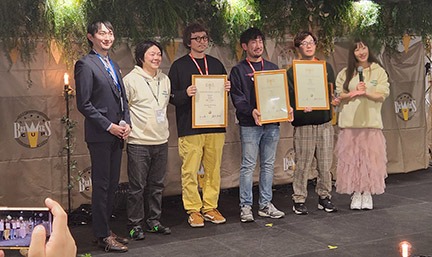An alternative way to judge beers in competition
TroubleShooting
Do all beer competitions follow the same system for judging entrants?
Takeaways from the Japan Brewers Cup — Yokohama, Japan, February 9, 2024

Earlier this year, I had the great opportunity to travel to Japan to visit some breweries, give a presentation to a group of brewers gathered to judge beers at the Japan Brewers Cup in Yokohama, participate in the judging, and return the next day for the festival and award presentation ceremony. It’s been many years since my past trip to Japan and I hope my next visit is sooner than later because Japan is a wonderful place to visit. One of the many highlights of my recent trip was participating in the Japan Brewers Cup judging process. Not only was the whole process very well run and the beers terrific, but the judging methodology was totally different from what I have seen in my previous judging experiences, opening my eyes to something new.
Homebrewing and commercial brewing competitions are largely based on beer style where serious consideration is given to how a beer entry conforms to category guidelines. Entering a great beer in the wrong category can result in a very low score. Similarly, a group of judges influenced by a vocal expert may place too much emphasis on splitting stylistic hairs. That excellent black beer entered as a porter does not medal because the judges ultimately determine that the beer was really a stout and unworthy of an award as a porter. My dear friend and brewing mentor, Dr. Michael Lewis, referred to taxonomists and definers of beer style as “splitters” because they split things into different cubbyholes for classification, and often recategorize the cubbyholes as new information comes along. Michael is a self-proclaimed “lumper” more interested in big picture ideas. The Japan Brewers Cup was a breath of fresh air for me because I, too, am a lumper and found the methodology used for this competition to be more aligned with how Ashton the Beer Consumer and Brewer evaluates beer versus Ashton the Guest Homebrew Judge.
Unlike the Great American Beer Festival with 99 categories representing 175 beer styles and up to three medals awarded per category, the Japan Brewers Cup had a total of just six categories with six awards per category. That’s right, I said six total categories! And instead of coming up with a score for each beer, judges were tasked with ranking beers from top to bottom in each of several judging rounds. The six “lumpy” categories were wheat beer, lagers, ales, fruit beers, IPAs, and dark beers.
The judging sheets only required judges to rank the beers, but judges were told to consider aroma, flavor, finish, drinkability, and total quality when assessing each beer. Those five attributes were the real focus of the judging. We were also given the style, OG, and calculated IBUs of each beer along with any special notes. Although we were instructed not to judge beers based on conformity to style, we were told to consider the style as it related to certain flavor characteristics. For example, sourness in a wheat beer identified by the brewer as a funky saison may be just fine but that same character in a wheat beer identified as a hefeweizen should be considered a flaw.

What really stood out to me in this approach was the emphasis placed on drinkability and total quality. While these ideas are open to interpretation, they get right at the consumer experience. It’s one thing for a beer to conform to style and have all sorts of interesting flavors and complex aromas, but if the beer is not highly drinkable and the consumer will not purchase it again some day, it’s really doomed in the market. When I was judging and thought of these traits, I asked myself if I would drink an entire serving of the beer, and if I were in the mood for another beer, would I want to drink another of the same beer?
In a world largely defined by style, be it in clothing, food, music, or beer, the Japan Brewers Cup judging experience was a great reminder that all things do not need to be split into categories and qualified by type. When the first day of the festival began to wind down, it was award time. It was cool seeing the same excitement upon receiving an award for first place lager as I’ve witnessed for a gold medal in the German-style Pilsner category in style-based competitions. I need to go back to Yokohama next year to check back in on this festival!

